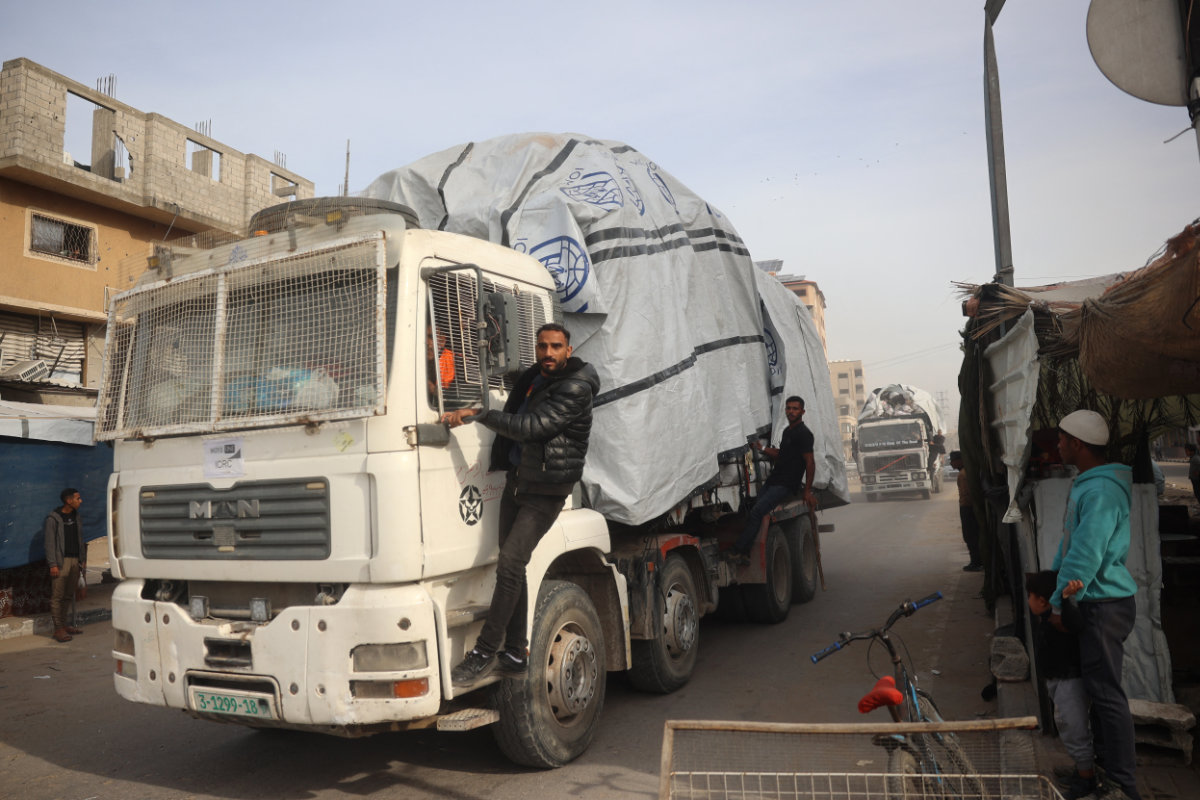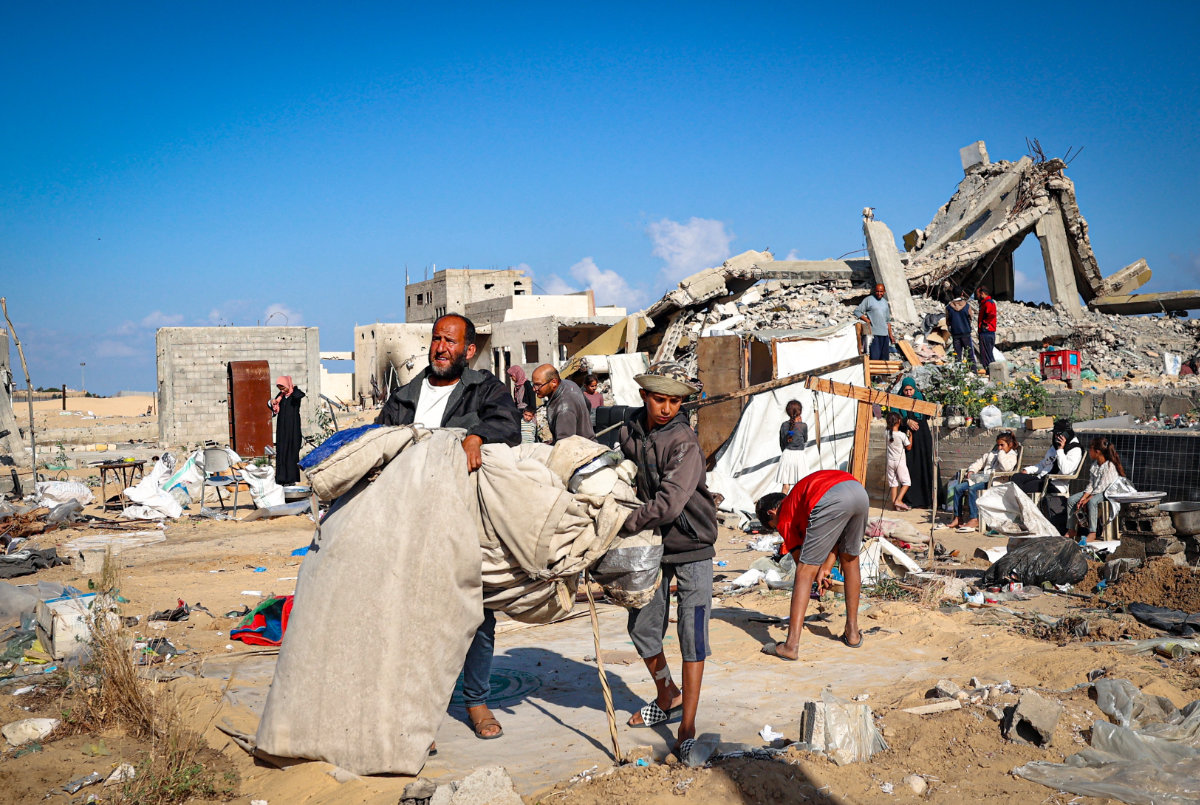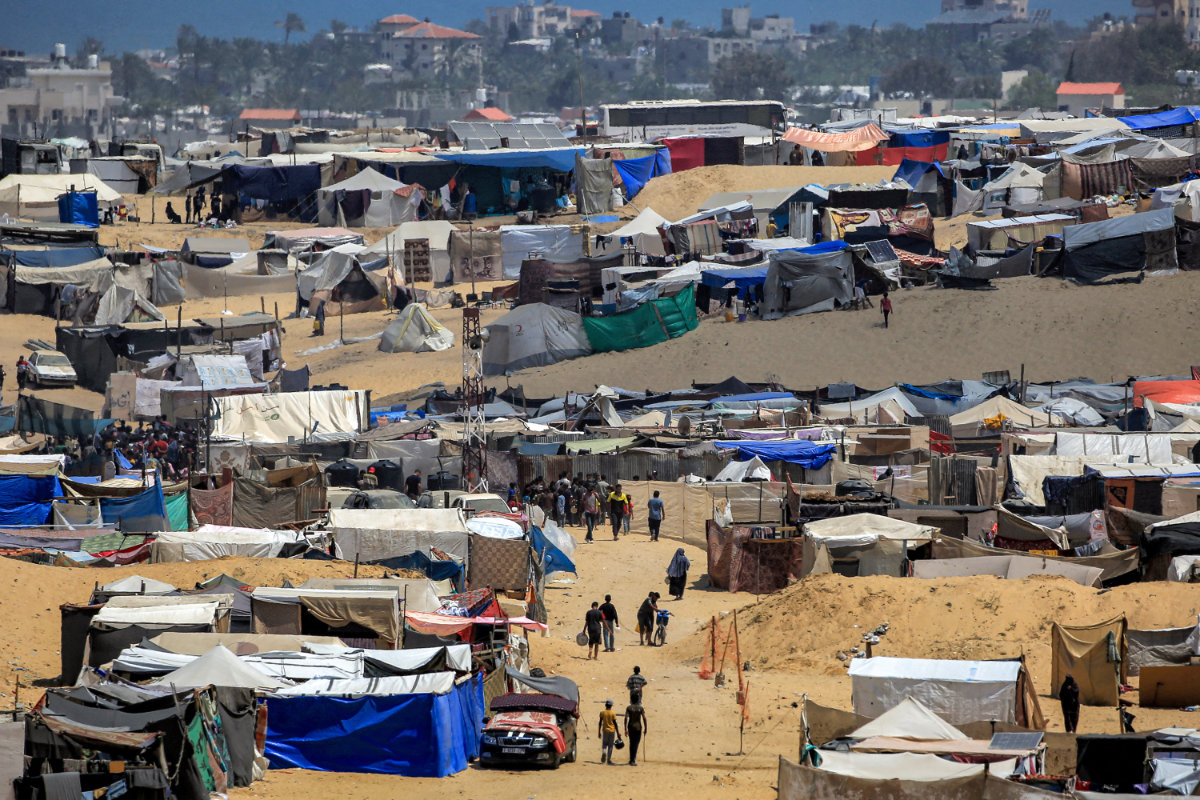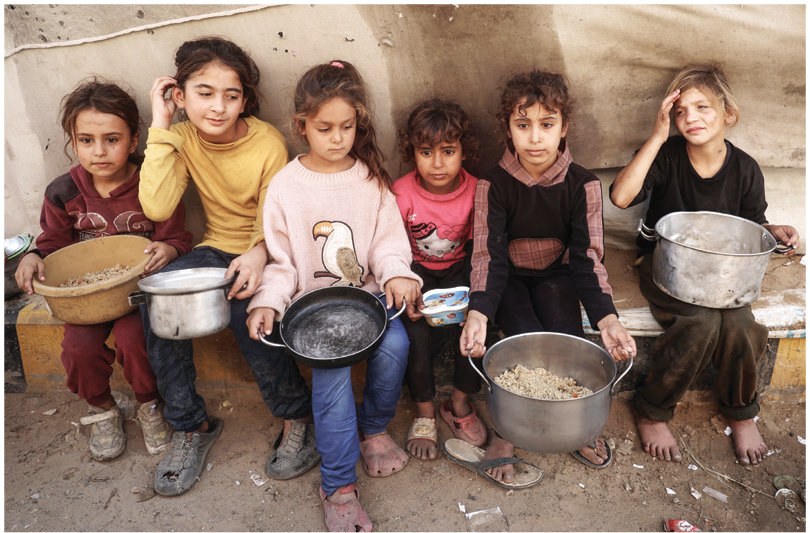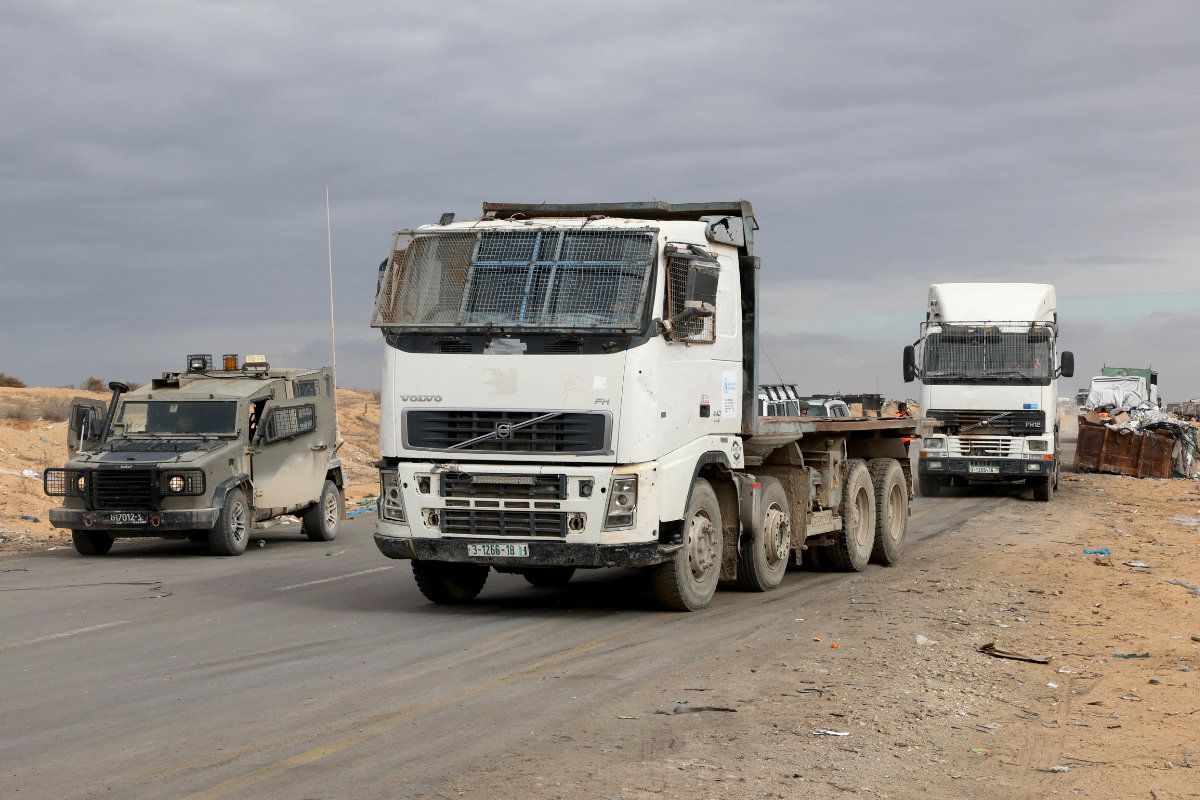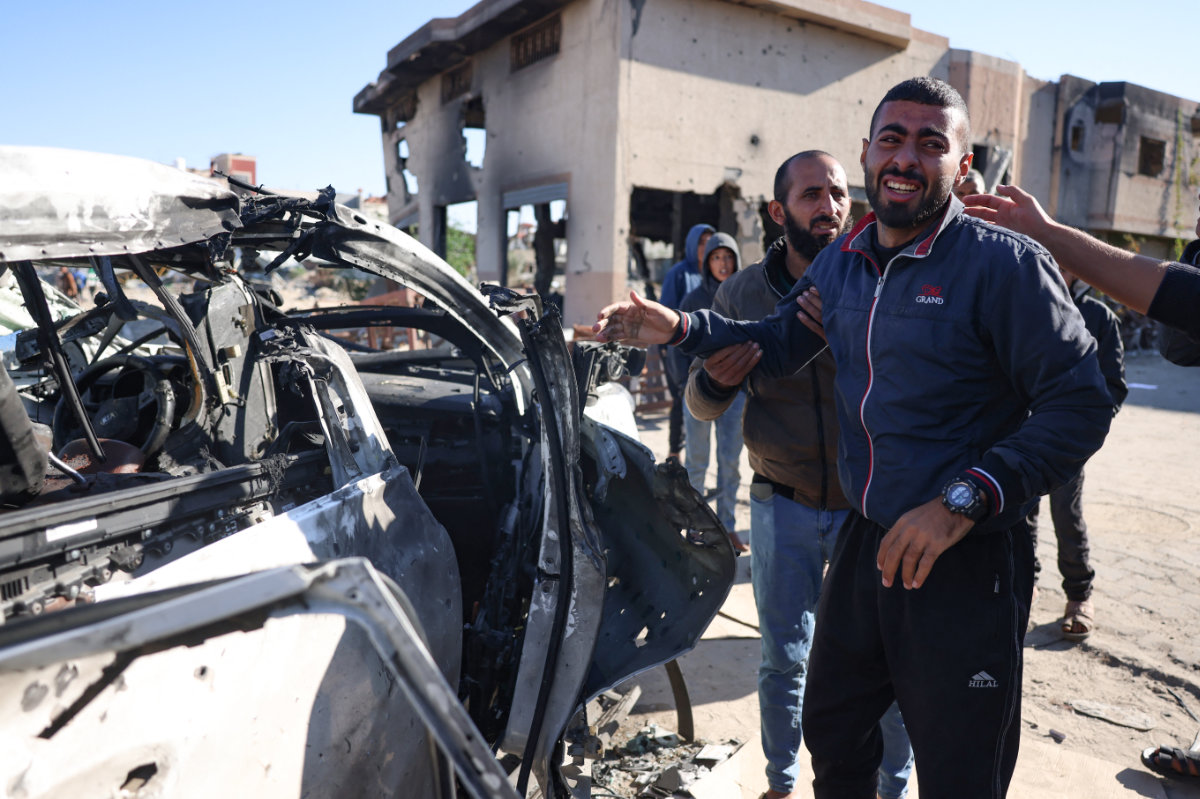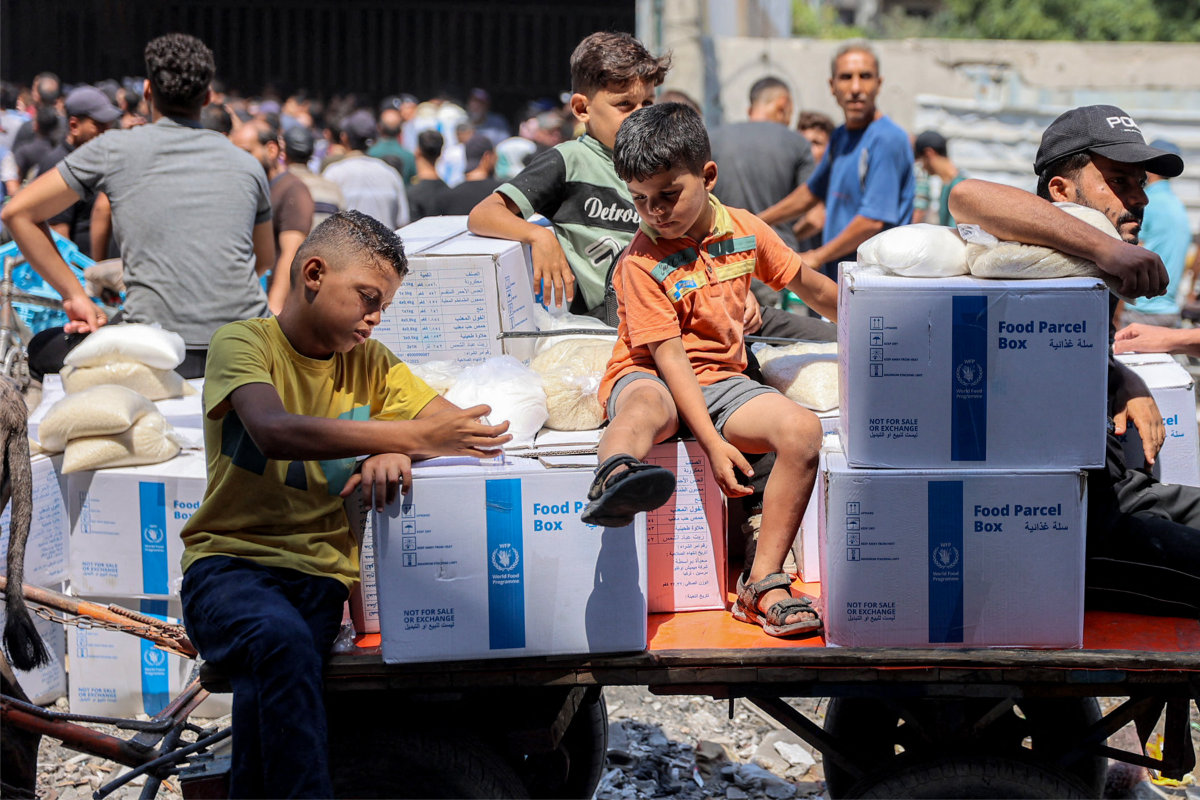BEIRUT/DUBAI/LONDON: A series of Israeli airstrikes rocked Beirut’s southern suburbs on Friday evening, erasing a residential block in the Haret Hreik neighborhood and reverberating across the Lebanese capital, rattling windows and sending a thick plume of dark smoke into the sky.
The Israeli army’s spokesperson Daniel Hagari claimed the “precise strikes” hit the central headquarters of the Iran-backed group Hezbollah, believed to be located beneath residential buildings, the AP news agency reported.
The blasts caused nationwide panic and plunged the surrounding area into chaos. Paramedics from Hezbollah’s Islamic Health Authority rushed to the scene alongside relatives of the buildings’ residents.
Others in the southern suburbs rushed into their cars and fled towards Beirut and Mount Lebanon.
Lebanon’s Health Minister Firas Abiad confirmed that “some of the targeted buildings were inhabited.”
At least two people have been killed, and hospitals in the area received more than 50 wounded from nearby buildings, including three in critical condition. Rescue teams urgently appealed for blood donations.
The Lebanese state-run National News Agency said six tall buildings in Haret Hreik have been reduced to rubble in the biggest blast to hit the capital in the past year.
Targeting Hezbollah’s secretary-general, Hassan Nasrallah, who was suspected to be in a bunker underneath the buildings, the Israeli military used F-35 aircraft and dropped 2,000 tons of explosives on the area, according to Israeli media.
Mohanad Hage Ali, the deputy director for research at the Malcolm H. Kerr Carnegie Middle East Center, told Arab News that “Israel has moved from the precision killings phase into dynamite or blast fishing; the end justifies the means.”
“They can kill hundreds to reach a target,” he continued. “This is why it is more likely a high-value target was there (in the targeted block) – this is why they (the Israeli military) took the decision.”
Israeli broadcaster Kan 11 initially reported an on-screen headline saying Nasrallah was “harmed,” but quickly followed with Israeli assessments indicating he is dead.
However, the Iranian news agency Tasnim reported that a security source confirmed Hezbollah chief Hassan Nasrallah and the group’s executive council head, Hashim Safi Al-Din, were unharmed.
Iran’s embassy in Beirut described the Israeli strike as a “serious escalation that changes the rules of the game,” threatening that there will be repercussions.
“The Israeli regime once again commits a bloody massacre, targeting heavily populated residential neighborhoods while spewing false justifications to try and cover up its brutal crimes,” the embassy wrote on the social platform X.
“There is no doubt that this reprehensible crime and reckless behavior represent a serious escalation that changes the rules of the game, and that its perpetrator will be punished appropriately.”
Analysts believe the strike on Haret Hreik reflects Israel’s dismissal of traditional wartime norms, marking the start of a new phase in the Israel-Hezbollah conflict.
“Such a strike signals a disregard for the limitations typically observed in warfare, including proportionality and ethical considerations as it is a civil populated area as Tel Aviv a city with military basis,” Rafe Jabari, a researcher on the political sociology of Arab states, told Arab News.
“The scale of the destruction implies that the Israeli government is not constrained by these principles of International Law,” he added.
Jabari also believes “the strategy being employed suggests that Israel believes that war is the solution to end further conflict.”
He explained that “airstrikes are the strategic weapons used by Israel before the invasion of the Lebanese territories as happened in the Gaza Strip.
“The Israeli army is using destruction and terrors to eliminate any opposition to its occupation and colonization policy.”
“However, this approach is wrong,” Jabari continued. “Rather than achieving lasting peace, the continuation of such military actions is likely to provoke further instability and insecurity across the region.”
“Instead of bringing about an end to hostilities, this escalation will fuel the conditions for more wars and destruction in the future including this one.”
Likewise, Beirut-based political analyst Nader Ezzedine said: “By targeting Hezbollah chief Hassan Nasrallah, regardless of the outcome, Israel has chosen to break all established conflict rules and red lines that had been observed in its previous wars with Hezbollah.”
He told Arab News that “whether the outcome of this strike results in Nasrallah’s death or his survival, it will have significant ramifications for the conflict.”
“Hezbollah initially tried to adhere to certain rules in the hopes that an agreement can be reached to end the war in Gaza and Lebanon,” he added. “However, after this strike, I no longer believe this war will have any rules or limits.”
However, Ezzeddine believes that while the strike may have dealt a significant blow to Hezbollah and undermined its fighters’ morale, “it will not end the war but will likely intensify the fighting even further.”
“This strike will not end the conflict if Israel aimed to do so by killing Nasrallah,” he said. “Instead, it will certainly cause a huge escalation.”
He also expects this strike to be followed by an Israeli ground invasion, while Hezbollah may escalate its attacks against Israel.
Middle East expert Jabari noted that “we are witnessing an open war worse than the one in 2006. The Israeli army and government are choosing weapons as a means of negotiation instead of political and diplomatic endeavors.”
On Wednesday, Sep. 25, Israel’s military chief Herzi Halevi told troops that its airstrikes in Lebanon aimed to destroy Hezbollah’s infrastructure to pave the way for a possible ground incursion, CNN reported.
These comments came after the Israeli army intercepted a missile that Hezbollah said it had shot at the headquarters of Mossad, Israel’s intelligence agency, near the Israeli city of Tel Aviv.
A day earlier, an Israeli airstrike on Beirut killed senior Hezbollah commander Ibrahim Qubaisi, who reportedly led the group’s missile and rocket force.
Reports of Friday’s strikes came less than an hour after Israeli Prime Minister Benjamin Netanyahu’s address at the UN General Assembly, in which he vowed to continue his military operation in Lebanon despite a US ceasefire proposal demanding a 21-day pause in the fighting between Israel and Hezbollah.
Israel’s onslaught on Lebanon, which it says aims to eliminate Hezbollah, has killed within a few days 720 Lebanese people, many of them women and children, according to Lebanon’s health ministry.
Since October 8, after Israel launched its onslaught on Palestine’s Gaza Strip, Israel and Hezbollah have been exchanging cross-border fire. But in the last week, Israel dramatically intensified its airstrikes in Lebanon, claiming the goal is to end Hezbollah’s 11 months of attacks on its territory.

















